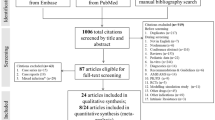Summary
The pharmacokinetic characteristics of the parenteral cephalosporins cephalothin, cefazolin, cephradine, cefamandole, cefuroxime and cefotaxime (HR-756) were compared applying six different pharmacokinetic points of view. In interpreting antibiotic concentrations measured in soft tissue interstitial fluid (STIF), special attention was paid to the following parameters: cross-point; serum to STIF (AUC) ratio before and after cross-point; STIF half-life time (T 1/2); half-life time area under the curve (AUC) correlated to total STIF area as a percentage and total STIF area under the curve (AUC) measured in micrograms per four hours. The test substances were given to dogs as a single-dose intravenous bolus injection of 20 µg/kg bodyweight. The investigations resulted in a different order of precedence according to the pharmacokinetic viewpoint applied. Pharmacokinetic parameters are discussed on the basis of the results of this study indicating a more rational antibiotic treatment regimen which is very important in the perioperative prophylaxis of wound infection.
Zusammenfassung
Die pharmakokinetischen Charakteristika der parenteralen Cephalosporine Cephalotin, Cefazolin, Cephradin, Cefamandol, Cefuroxim und Cefotaxim (HR 756) wurden miteinander verglichen. Es wurden sechs verschiedene pharmakokinetische Gesichtspunkte zugrundegelegt. Bei der Interpretation der tatsächlich gemessenen Antibiotikakonzentrationen in der interstitiellen Flüssigkeit des Subkutangewebes (STIF) wurden folgende Parameter besonders berücksichtigt: Überkreuzung; Verhältnis Serum zu STIF (AUC) vor und nach dem Kreuzungspunkt; Halbwertzeit (T 1/2); die Fläche unter der Kurve (AUC) der Halbwertzeit korreliert mit der Gesamt-STIF-Fläche in Prozent; die Gesamt-STIF-Fläche unter der Kurve (AUC) gemessen in Mikrogramm pro vier Stunden. Die Testsubstanzen wurden Hunden in einer Einzeldosis von 20 µg/kg Körpergewicht mittels einer intravenösen Bolusinjektion gegeben. Abhängig von dem pharmakokinetischen Gesichtspunkt ergaben die Untersuchungen eine unterschiedliche Rangordnung. Die auf den Ergebnissen dieser Studie basierenden pharmakokinetischen Parameter werden diskutiert. Diese weisen auf eine rationellere Antibiotikatherapie hin, die in der perioperativen Wundinfektionsprophylaxe von größter Wichtigkeit ist.
Similar content being viewed by others
Literature
Polk, H. C., Lopez-Mayor, J. F. Postoperative wound infection: A prospective study of determinant factors and prevention. Surgery 66 (1969) 97–103.
Eickenberg, H.-U. Concentration and protein binding of cephalosporins in renal interstitial fluid, urine and serum. Infection 6 Suppl. 2 (1978) 233–237.
Waterman, N. G., Kastan, L. B. Interstitial fluid and serum antibiotic concentrations. Arch. Surg. 105 (1972) 192–196.
Eickenberg, H.-U., Waterman, N. G., Scharfenberger, L. Renal interstitial fluid, urine and serum antibiotic concentrations. Surg. Forum 26 (1975) 589.
Dost, F. H. Grundlagen der Pharmakokinetik. Georg Thieme, Stuttgart 1968, p. 8 ff.
Guyton, A. C. A concept of negative interstitial pressure based on pressures in implanted perforated capsules. Circ. Res. 12 (1963) 399–414.
Baker, G., Hunt, T. K. Penicillin concentrations in experimental wounds. Am. J. Surg. 115 (1968) 532–535.
Waterman, N. G., Scharfenberger, L. F. Concentration relationship of cefaclor in serum, interstitial fluid, bile and urine of dogs. Antimicrob. Agents Chemother. 14 (1978) 614–616.
Alexander, J. W., Skyes, N. S., Mitchell, M. M. Concentration of selected intravenously administered antibiotics in experimental surgical wounds. J. Trauma 13 (1973) 423–434.
Chisholm, G. D., Waterworth, P. M., Calnan, J. S. Concentrations of antibacterial agents in interstitial fluid. Br. Med. J. 1 (1973) 569–573.
Gerding, D. N., Hall, W. H. The penetration of antibiotics into peritoneal fluid. Bull. N. Y. Acad. Med. 51 (1975) 1016–1019.
Tight, R. R., Prior, R. B., Perkins, R. I. Fluid and penicillin G dynamics in polyethylene chambers implanted subcutaneously in rabbits. Antimicrob. Agents Chemother. 8 (1975) 495–497.
Carbon, C., Chau, N. R., Contrepois, A., Lamotte-Barrillon, S. Tissue cage experiment with β-lactam antibiotics in rabbits. Scand. J. Infect. Dis. Suppl. 14 (1978) 127–134.
Bergan, T., Versland, I. The mini-pigs as a model for penetration of penicillins. Scand. J. Infect. Dis. Suppl. 14 (1978) 135–142.
Rauws, A. G., Van Klingeren, B. Estimation of antibiotic levels in interstitial fluid from whole tissue levels. Scand. J. Infect. Dis. Suppl. 14 (1978) 186–188.
Chisholm, G. D. The tissue cage model in the distribution of antibacterial agents. Scand. J. Infect. Dis. Suppl. 14 (1978) 118–124.
Madsen, P. O., Baumüller, A., Hoyme, U. Experimental models for determination of antimicrobials in prostatic tissue, interstitial fluid and secretion. Scand. J. Infect. Dis. Suppl. 14 (1978) 145–150.
Holm, S. E., Ekedahl, C., Bergholm, A.-M. Comparison of antibiotic assays using different experimental models and their possible clinical significance. Scand. J. Infect. Dis. Suppl. 14 (1978) 214–220.
Eickenberg, H.-U. What is interstitial fluid? Scand. J. Infect. Dis. Suppl. 14 (1978) 166–197.
Author information
Authors and Affiliations
Rights and permissions
About this article
Cite this article
Eickenberg, H.U. Interstitial concentration of antibiotics and their significance for an adequate dosage. Infection 8 (Suppl 1), S39–S44 (1980). https://doi.org/10.1007/BF01644934
Issue Date:
DOI: https://doi.org/10.1007/BF01644934




